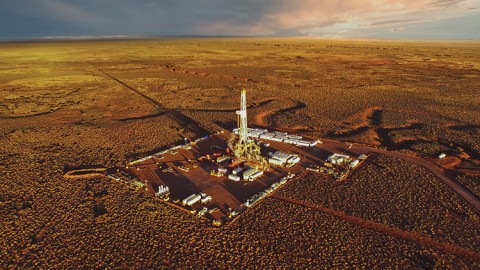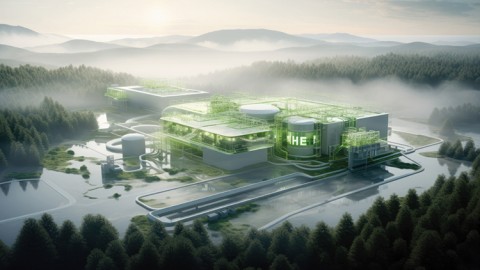Natural gas and renewable energy are important components of a strong national energy market in order of energy security. Nevertheless, there are significant, although not overwhelming, obstacles to using natural gas and renewable energy to lessen our country’s dependency on imported oil for transportation applications.
New investors are implementing renewable energies to the test and gaining important knowledge, but widespread adoption of one or more alternative fuels will necessitate larger systemic changes. Natural gas and renewable energy have also increased dramatically over the past few years. In many ways, the two energy sources seem to be synergistic: natural gas fuel production has low capital expenditure and fluctuating fuel prices, whereas renewable energy providers, with the exception of bioenergy, feature greater capital expenditure but typically negligible fuel prices.
General Overview
Firstly, it is important to note the barriers of market penetration that are considered significant; there are both immediate opportunities and long-term prospects for significantly reducing emissions and petroleum use in the transportation sector. According to a CNG Expert, who opted for anonymity, “Egypt is now looking for the ways to fix the country’s severe air pollution and public health problems, so one way to do this is by using CNG for a fuel source to mitigate the air pollution and improve the health of everyone in all of the communities as part of the country’s government policy to transition from oil to natural gas.”
Natural gas is copious and cheap, which opens up chances for alternative fuels as well as CNG to gain market share. The many alternative usage paths have their own features, deployment obstacles, and economic repercussions. Additionally, natural gas as an energy source is one of the cheapest production alternatives, which enables electric vehicles save money if compared with gasoline. Natural gas generation’s strong dispatchability leads to an increased renewable energy saturation, which might assist decrease battery car life cycle emissions in the coming years.
RNG refers to anaerobically produced biogas that has been purified to be used as a substitute for fossil natural gas. Raw biogas has a methane concentration approximately 60%, depending on the source of the biogas, and should be transformed into RNG through a series of processes. RNG offers a wide range of applications as a fossil natural gas replacement. In fact, RNG can be used as a motor fuel, a source of power, a heat source, or a feedstock for bio-products.
Furthermore, RNG can be utilized regionally or pumped into natural gas transportation or distribution pipes. As a matter of fact, RNG could be used as a source of energy in a number of vehicles, either as CNG or LNG. In fact, it was found that nearly 90% of RNG pipeline injection operations were supplying a small fraction of the RNG to a car fuel industry down the supply chain as of Q2 2020. In such situation, RNG was delivered to fuelling stations located distant from the biogas supply through a pipeline network.
Challenges and Benefits
Consequently, it is essential to weigh the various challenges and benefits associated with the potential of CNG in the Renewable Energy, electrical power, and transportation sector. This includes challenges on an economical and technical levels. For example, RNG resource development is one approach to expand fuel supply and boost fuel stability, as well as give financial opportunities to communities and users, enhance quality of the air, and cut greenhouse gas (GHG) emissions. Also, local industries might profit from establishing RNG initiatives by building infrastructure and selling cars that could run on such energy. It is also worth noting that introducing a renewable supply of car fuel to a region has the potential to attract outside vehicle fleets, since biogas-derived CNG may be offered at a cheaper price than conventional fossil-fuel-based vehicle fuel, and businesses may be searching for methods to green their ships or enhance corporate sustainability.
On the other hand, RNG is largely made up of methane, but when burnt produces carbon dioxide. Other advantages generally offset the emission of CO2. Nevertheless, since methane is 85 times stronger than CO2 as a GHG on over the course of a 20-year time frame, any methane leakage along the RNG supply chain before to burning might negate any possible climate advantages. Moreover, the uses of RNG are those of the same infrastructure as conventional natural gas (including pipelines and refuelling stations), there is a danger of extending infrastructure that allows for increased fossil fuel use. Furthermore, some people believe that other applications for some organic matter might be more helpful.
The expansion of RNG projects is hampered by two sorts of obstacles: economic and technological. Consequently, because of the quantity and long-term cheap cost of conventional natural gas, project development economics might be tough to achieve. In terms of technical aspects, converting raw biogas to RNG necessitates fulfilling a slew of gas performance standards, which differs by region or network system and can be challenging to achieve financial stability based on the biogas resource.
The Way Forward
Both forms of energy have been known to be key elements of a transition to a cleaner and more secure energy future, but much of the current discourse considers each in isolation or concentrates on the competitive impacts of one on the other. Natural gas and renewable energy usage has increased exponentially. These types of energy have been hailed as essential components of a shift to a greener, more stable and reliable future economy, but most of the present debate treats them separately or focuses on their competitive effects on one another.
Future paths might include the utilization of natural gas, sustainably sourced, next stage bio-based fuels, and electric cars, among other things. Existing and prospective alternative fuel choices have different market points of entry and pricing strategies, which might vary geographically depending on specific transportation demands and infrastructure facilities. To fully comprehend the potential consequences of these fuel alternatives, additional studies and further evaluations are required.
Although there are some substantial hurdles to market penetration, there are both current and long-term potential in the transport industry to reduce pollution and fuel usage. Combining biofuels with fuel has been a significant avenue to achieving this objective during the last couple of decades.








